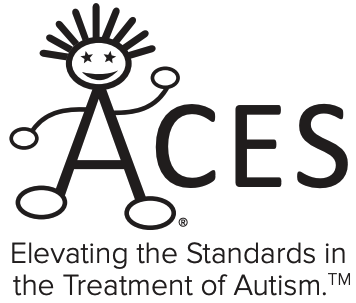January 27, 2017
Arizona Daily Sun
Jake Bacon
Mary Haynie is glad that her granddaughter, Jaclyn, might still have a job if the Flagsta minimum wage increases to $12 an hour in July.
But she’s not sure how she’s going to explain to Jaclyn why some of her friends had to move away or why they might have lost their jobs or why her service providers have moved out of town.
Jaclyn has Down syndrome and receives speech and habilitative care from a couple of dierent providers in town. She’s also a proud, four-year employee of HomCo Lumber & Hardware on East Butler Avenue, where she works about eight to 12 hours a week. Several of her friends with Down syndrome or other disabilities also have jobs at other businesses around town.
Having a job makes Jaclyn and her friends feel like they’re contributing to the community, the economy and their friends, Haynie said. They like that the Social Security taxes that are taken out of their paychecks are going to help their friends who might not be able to work like them.
“It’s not really about the money, but about feeling productive,” Haynie said.
Haynie worries that some of Jaclyn’s friends and young people looking for their rst jobs or holding down their rst job may nd themselves out of work or unable to nd a job with the increase in minimum wage.
In November, two minimum wage ballot measures passed, one increased the state minimum wage from $8.05 an hour to $10 an hour on Jan. 1. It will gradually increase to $12 by 2020 for regular workers and to $9 an hour by 2020 for tipped workers. It also included language requiring that businesses give employees paid sick leave. State and federal employers were exempt.
The other minimum wage increase was approved by Flagsta voters and only aects businesses within the city limits. That ballot measure increased the local minimum wage from $8.05 an hour to $15 an hour by 2021 for regular workers and to $15 an hour for tipped workers by 2026. It also included language that the local wage always be at least $2 more than the state minimum wage and that the local wage be tied to the consumer price index or cost of living.
What voters weren’t expecting was for both minimum wage ballot issues to pass, causing the minimum wage in Flagsta to increase to $10 an hour in January, when the state wage kicked in, and then increase to $12 an hour in July, when the local wage law takes eect.
There are three groups in Flagsta that are battling over the local wage. Flagsta Needs a Raise proposed the ballot measure and is ghting to keep it as is. Elevate Flagsta turned in a petition earlier this month to put the local minimum wage law back on the ballot. Bridging Flagsta is trying to strike a middle ground between the two and has asked Flagsta City Council to remove the $2 above the state minimum wage clause from the new local law.
“It’s not just the mom and pop restaurants in town that are struggling with this, it’s all the mom and pop businesses,” Haynie said.
HomCo owner Mike Brackin said he will keep Jaclyn on his payroll, even if it means paying her out of his own pocket.
“That job means the world to her. She’s a joy to work with. It’s been good for her and for my people,” he said. “There’s no way I could take that away from her.”
But he’s not sure about some of his other part-time employees. He currently has a hiring freeze in place at the store, but if the $12 minimum wage goes into eect in July, he may have to make cuts in hours and lay o some entry-level people. He said he wished he could raise his prices to absorb the new minimum wage but then he couldn’t compete with the national chain stores in town.
“I’m a small business -- big maybe for Flagsta, but small compared to the national competition,” Brackin said. “I have to nd other ways.”
And that worries Haynie, because HomCo isn’t the only small business or organization in town that is struggling with nding a way to meet the new minimum wage. Many of the organizations and employees that provide services to residents like Jaclyn are facing cuts in hours, possible layos or even closing their doors and moving out of the city.
“What happens then?” Haynie asked. “What happens to the people who need these services? What happens to their families? What happens to the employees?”
$10 MAYBE, $12 NO WAY
The Hozhoni Foundation is one local organization whose employees could see shorter hours layos if the $12 wage takes eect in July.
Hozhoni Foundation CEO Monica Attridge estimated that to meet the requirements of the new state and Flagsta minimum wages will cost the foundation about $1.2 million a year. While Hozhoni and other organizations like it that care for the developmentally disabled do get funding from the state, it’s not nearly enough to cover the cost of care for their clients. The state reimburses them about 75 percent of the total cost of care for each client.
State lawmakers agreed late last year to provide additional short-term funds for care providers across the state to help them meet the $10 state minimum wage increase on Jan. 1. Attridge estimated that Hozhoni’s share of that will be about $300,000 to $350,000. That money won’t quite cover the $400,000 extra in expenses that Attridge estimates the new state minimum wage will cost Hozhoni in the rst year.
“We have 835 employees who take care of 862 clients,” she said. “And we have $29 million impact on the local economy. We buy local and rent local.”
She can’t cut sta. Like other organizations that work with the disabled, there are minimum stang levels set by the state to ensure the safety and proper care of both employees and clients. And the Hozhoni Foundation has already made cuts to other programs. The organization cut all middle management positions and put three group homes on the market.
If the minimum wage increases to $12 an hour in July, Attridge said Hozhoni may be able to make at least a couple of payrolls before having to close its doors or move.
“We were already circling the drain,” she said. “Now we’re just circling it faster.”
Other Flagsta organizations like Hozhoni are in a similar situation, Attridge said. She’s spoken with nine other care providers in Flagsta and they’ve all agreed that they won’t be able to provide services if the Flagsta minimum wage goes into eect.
Some will close their doors permanently; others who oer services statewide will move out of the Flagsta area, she said. Attridge isn’t sure what will happen with Hozhoni. The organization has another facility in Prescott and it might move there, but what about its Flagsta clients and their families?
Some families may be able to take care of their loved ones themselves, but most of those families will have to put them in other homes or facilities that may be farther away and move out of Flagsta to be near them, she said.
Moving Hozhoni into the county, just outside the city limits, isn’t an option, Attridge said. It might lower the wage Hozhoni has to pay employees but the organization probably won’t be able to nd anyone who would be willing to work for that lower wage.
“Most people had no clue about the ripple eect this would have,” Haynie said, referring to the Flagsta minimum wage. She was one of the residents circulating Elevate Flagsta’s petition to change the new law. “The majority of people I spoke to said they felt misled or misinformed about the (ballot issue). Why didn’t we go slower on this?”














